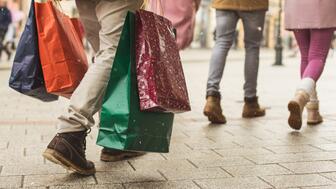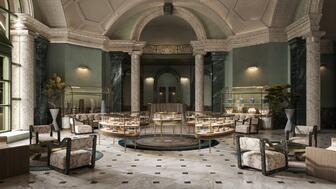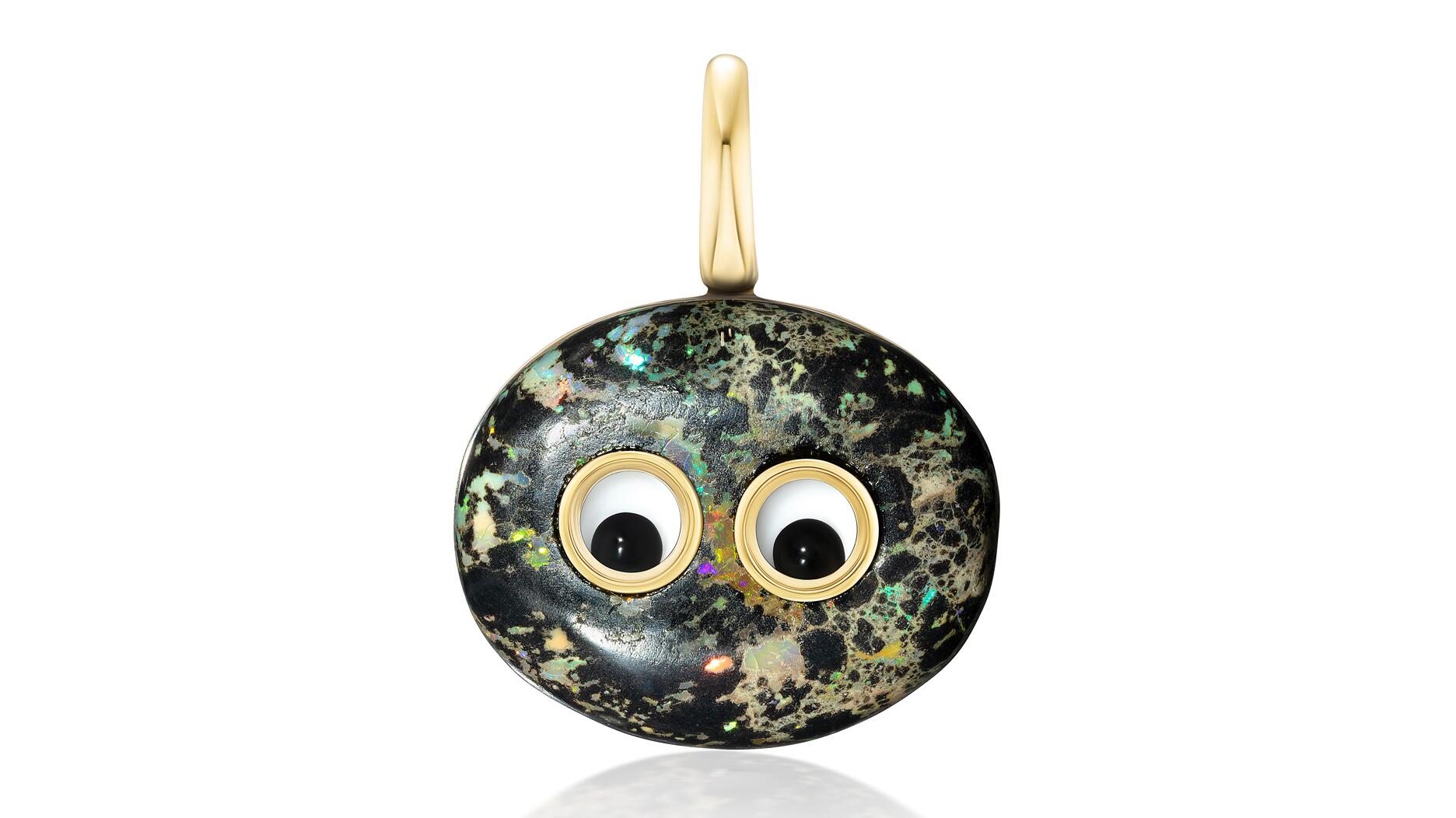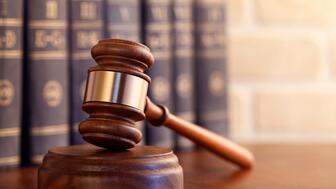The couple pleaded guilty to concealing at least $127 million in cash transactions at its precious metals businesses.
4 Predictions on Retail and Diamond Desire in 2019
It will be a watershed year for man-made diamonds, Editor-in-Chief Michelle Graff writes.

Last month, I had the pleasure of traveling to sunny Scottsdale, Arizona for the annual Centurion show and of catching up with retailers after the holiday season.
What I mostly heard was this: 2018 was a good year and jewelers were expecting a strong December, but the month took a dive alongside the stock market. And the events of late 2018/early 2019, including the 35-day government shutdown, have left retailers feeling unsure what to expect in the year ahead.
What is certain, however, is that this year is going to be very telling in terms of lab-grown diamonds. How will consumers take to the lines that are out there? Will they buy them for fashion jewelry or engagement rings? Will one brand or company begin to emerge as the dominant player in the space?
Read on for four thoughts on what lies ahead for the jewelry industry in 2019.
1. Retailers are feeling ________ about 2019.
Cautiously optimistic. Concerned. Unsure. These are all words I heard circulating at Centurion after a disappointing December capped off an otherwise strong year in 2018.
What will happen with the trade war? Will there be another shutdown (this was talked about at Centurion, although the answer now seems to be no)? How much did the first one shake up consumers?
Are we headed for a recession? Recessions are especially problematic for jewelry because it’s a discretionary purchase; you don’t need to replace a ring the same way you need to replace a car or a refrigerator. As one retailer put it: “We’re the first thing to go.”
Another word that came up: nervous, and it’s not just retailers who are nervous.
“I think everybody is just nervous about everything,” one retailer from the south shared.
She said she feels like she has the right merchandise and marketing in place at her store, but whether people will buy is the big unknown at this point. She also noted that looming ahead of 2019 is a presidential election year and an election always “screws things up.”
Feel free to fill in the blank with your own adjectives in the comments section below.
2. The year will tell us a lot about how consumers view diamonds, and Valentine’s Day will be the first big test.
A head-spinning number of headlines about lab-grown diamonds hit the internet every day, but I think they all can be boiled down to this:
Consumers are going to buy them, though in what quantities and for what purposes remains to be seen.
My guess: They will take a big bite out of the middle market, particularly for lower-priced fashion jewelry.
Yes, some will buy lab-grown diamond engagement rings, but I think the bulk of man-made diamond sales will be to those consumers who say, “Hey, I can get a nice version of this diamond earring/necklace/bracelet for less. Who cares about the romance of it coming from the Earth? I’m saving money, and it’s a nice gift for myself/my daughter/my best friend.”
As I noted above, however, this is just a guess, and time will ultimately tell what consumers want—lab-grown or mined—and what they want it for, with 2019 being a watershed moment in that story.
How will, for example, J.C. Penney and Macy’s do with “Grown With Love,” the line featuring diamonds grown mainly by WD Lab Grown Diamonds and set in jewelry manufactured, distributed and marketed by Richline? Will they sell enough to continue those lines?
How will Lightbox fare, and will De Beers continue to push the envelope, introducing bigger and better stones and more styles, including rings?

What about fashion lines like Atelier Swarovski x Stephen Webster? How well will those sell, and will the designers who made them keep going? Will we see one designer come up with that have-to-have design using man-made diamonds and emerge as the dominant player?
And what about the diamond growers themselves, companies like Diamond Foundry, the California-based company that experimented with, but ultimately didn’t make it in, brick-and-mortar retail? What will their role in the future of the industry look like?
3. Smart companies will stop and think.
In addition to acting as a gauge on consumers’ appetite for man-made diamonds, 2019 is going to be a good year for those selling diamonds today—man-made or natural—to evaluate the market for diamond jewelry going forward.
Some questions that spring to mind include:
--How are changing societal attitudes toward marriage in the U.S. going to impact demand for diamonds, given that engagement rings represent a big chunk of the market?
People are getting married later, often living together and/or having children first.
Or they’re not getting married at all. The U.S. Census Bureau released a “Families and Living Arrangements” table in 2018 that showed that single-person households comprised 28 percent of all households in the U.S. last year. In 1960, that number was 13 percent. The table also showed that 32 percent of all adults age 15 and over have never been married.
Are these long-term trends (I would say yes, for a variety of reasons) and, if so, is diamond marketing prepared to evolve to reflect that?
--How will diamonds stand up in the face of increased competition and, for some groups, declining discretionary income?
There are so many things to spend money on today, aren’t there? As The Wedding Report founder Shane McMurray noted in my story on engagement ring spending, there’s lattes and dinners out and gadgets and clothes, not to mention to the rise in the amount people are spending on what is generally referred to as “wellness”—special vitamins, yoga classes, boutique gym memberships, juice cleanses, etc.
Add to this the fact that many people’s wages aren’t keeping pace with the cost of living, and it equals less money for everything that’s not necessary.
--For those with plenty of discretionary income, what is the No. 1 luxury item that’s taking money away from diamond jewelry?
I would guess it’s not a tangible item, like a handbag or a pair of shoes, but rather experiences, particularly travel. Is there a way to compete with that?

4. Well-known retailers will continue to file for bankruptcy.
This last one is a bit of a cheat, as we’re less than 50 days into the year and, already, we’ve seen seven retailers go Chapter 11, according to Retail Dive’s running list of bankruptcy victims for the year. Among them were long-time mall staples Things Remembered, Gymboree and Charlotte Russe.
So which stores that carry fine jewelry are in danger in 2019?
I predicted in early 2018 that Sears would cease to exist and while it has risen from the ashes, it’s hard to imagine what it can do to make itself relevant again and stay in business.
J.C. Penney is another retailer we’ve been watching for a while, and Neiman Marcus is also a name that keeps popping up on various bankruptcy watch lists, with some predicting that 2019 could be on par with 2017 in terms of the number of retailers going Chapter 11.
The Latest

Consumers shared concerns about prices, inflation, tariffs, trade, and politics in the survey’s write-in response section.

In February 2026, the auction house will move its headquarters to the former Steinway Hall, a neoclassical landmark on Billionaires’ Row.

How Jewelers of America’s 20 Under 40 are leading to ensure a brighter future for the jewelry industry.

The new show will take place Jan. 23-25, 2026.


The former BHP Billiton leader and Gemfields chairman is remembered for his influential leadership throughout his 50-year mining career.

The LVMH-owned brand has partnered with the costume design union to revamp its award for 2026.

Roseco’s 704-page catalog showcases new lab-grown diamonds, findings, tools & more—available in print or interactive digital editions.

The luxury titan inked a deal to acquire an initial minority stake in the jewelry manufacturer with a pathway to full ownership by 2032.

The company’s curation of unsigned vintage and estate jewelry debuted at the Bloomingdale’s in Costa Mesa, California.

In the recent multi-shipment seizure, CBP also found counterfeit Audemars Piguet, Moncler, and Chrome Hearts items.

Jewelers of America execs and National Jeweler editors discuss tariffs, the sky-high gold price, and the engagement that broke the internet.

The luxury goods company said founder Ippolita Rostagno will remain at the brand’s helm.

Laura Burdese, who joined the Italian luxury brand in 2022, will take on the role in July.

Need a gift for the cat lover who has everything? Look no further than our latest Piece of the Week.

It purchased the “Grosse Pièce,” an ultra-complicated Audemars Piguet pocket watch from the ‘20s, for a record-breaking price at Sotheby’s.

The lab-grown diamond grower now offers custom engagement and fashion jewelry through its Kira Custom Lab Jewelry service.

Chandler got his start at Michelson Jewelers and has served as DCA president and CEO since 2001. He will retire at the end of the month.

The boutique is slated to open this week inside Terminal 8, offering pre-owned Rolex watches and more to international travelers.

Sponsored by Digital Monitoring Products

The special-edition egg pendant ingested in a New Zealand jewelry store was recovered after a six-day wait.

Associate Editor Natalie Francisco plays favorites with Piece of the Week, selecting a standout piece of jewelry from each month of 2025.

The “Love and Desire” campaign is inspired by the magic that follows when one’s heart leads the way, said the brand.

Two awardees will receive free tuition for an educational course at the Swiss lab, with flights and lodging included.

Berta de Pablos-Barbier will replace Alexander Lacik at the start of January, two months earlier than expected.

Sotheby’s held its first two jewelry sales at the Breuer building last week, and they totaled nearly $44 million.

Winners will receive free registration and lodging for its fourth annual event in Detroit.


























